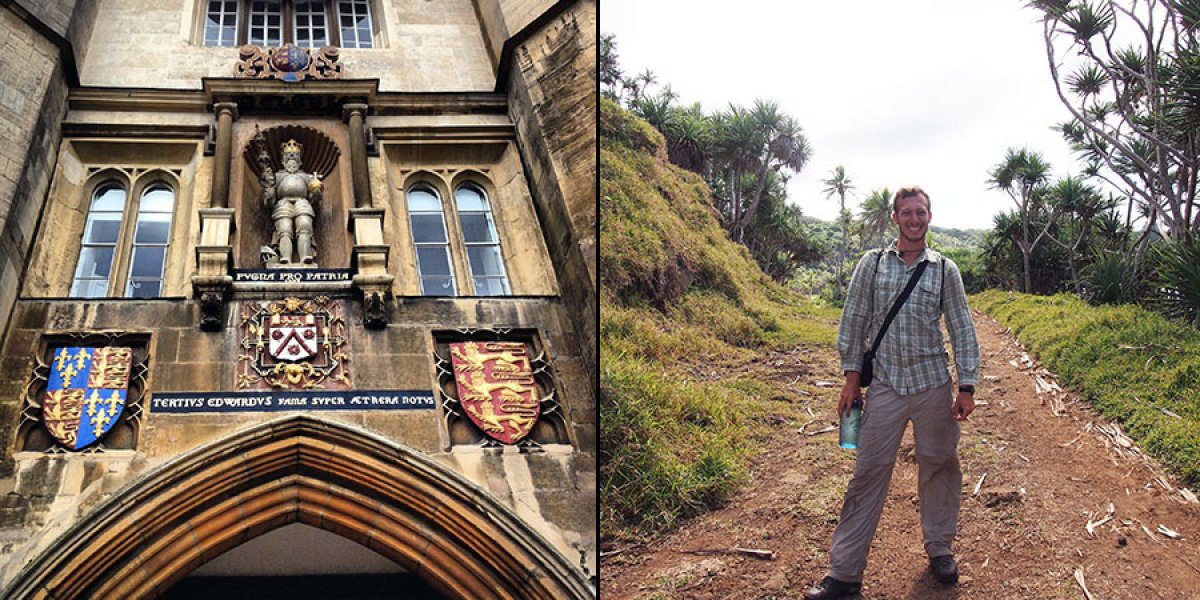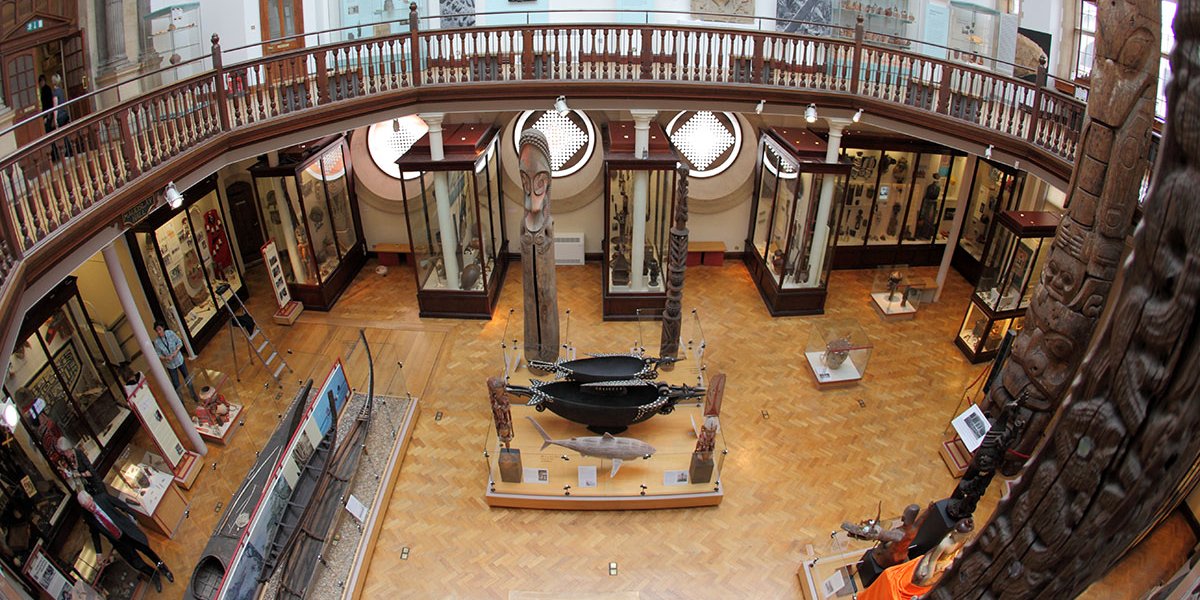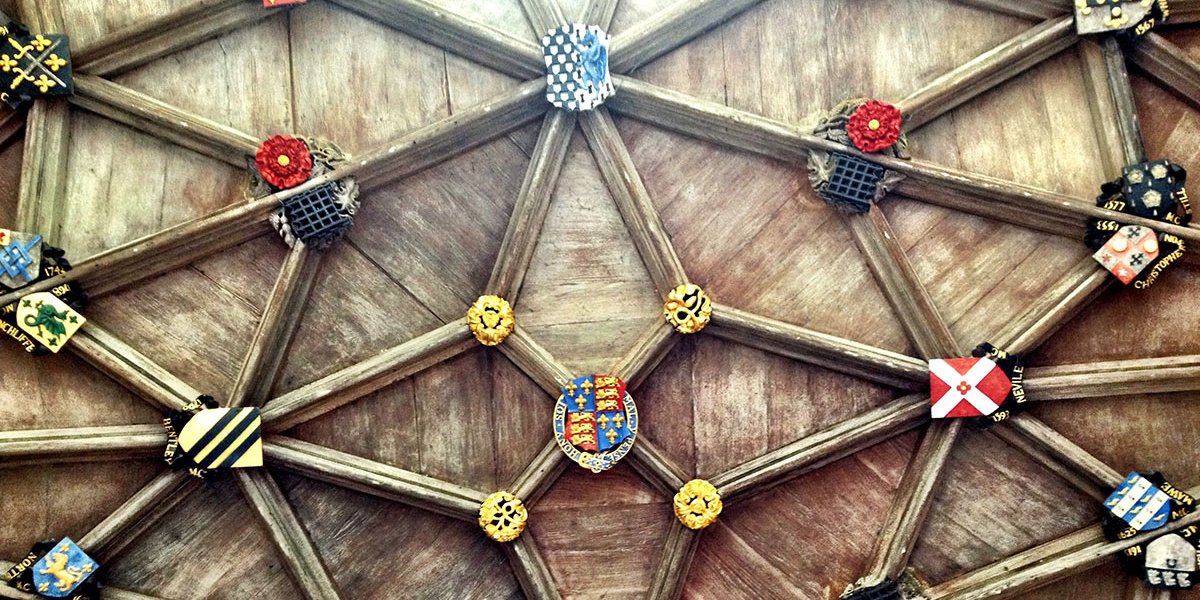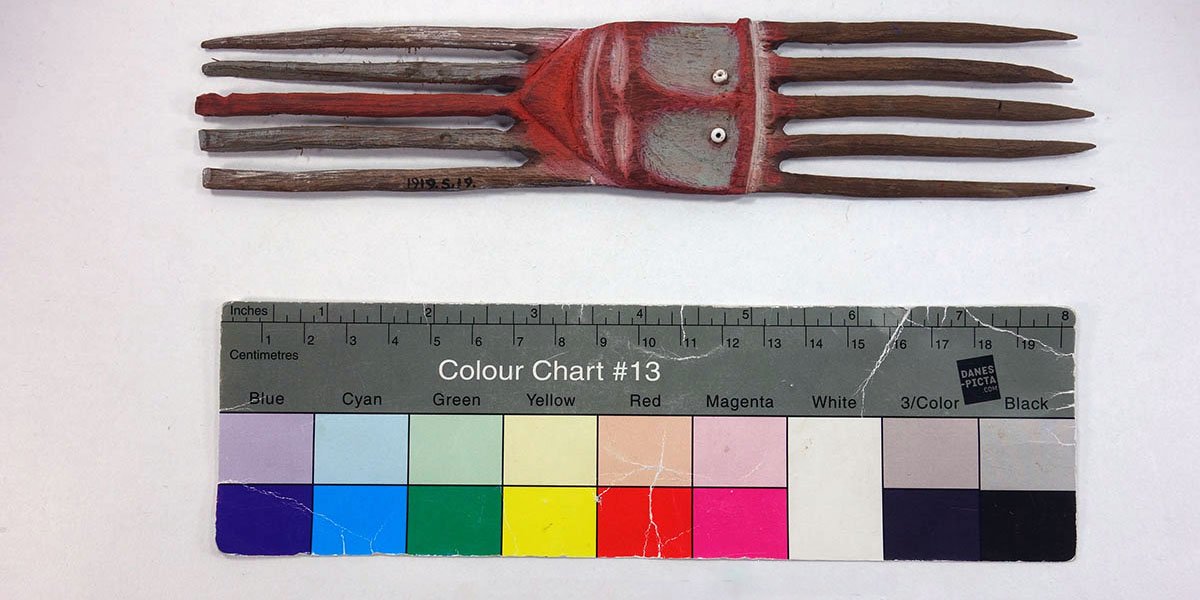From Trinity to the Tropics - Andrew Lorey
Andrew Lorey (Trinity 2015) describes how the opportunities and experiences he gained at Cambridge were vital to securing a job at Bernice Pauahi Bishop Museum, Hawai‘i.
Aloha shirts and sandals have taken the place of tuxedos and gowns, and lū‘au have taken the place of Sunday roasts.
In many respects, a desire for exploration led me to enrol in a Master of Philosophy course in Archaeological Heritage and Museums at Trinity College, Cambridge. Having contributed to field-based research projects in the deserts of north-western Peru and in the volcanic islands of the Vanuatu archipelago, I had already enjoyed the thrills of geographical and archaeological exploration prior to settling in Cambridge. Yet when I began to consider pursuing postgraduate study, I found myself undeniably intrigued by the prospects of experiencing British culture and encountering Cambridge’s rich history first-hand. I could imagine no better environment in which to interrogate new theories, ideas and scholarship, and I was ecstatic when I learned in February 2015 that my application for admission had been successful at Trinity.
Cambridge: a place for growth
As I had anticipated, I discovered a wide variety of new archaeological and anthropological perspectives through my coursework at Cambridge, and I became familiar with scholarly literature in growing sub-fields like heritage studies and museum anthropology. I quickly learned that heritage studies and museology—concerned as they are with the intricacies of historic preservation, cultural maintenance and audience reception—necessitated specialised vocabularies and required a high degree of interpretive flexibility. Discussions with my professors and my peers frequently challenged my pre-existing notions about anthropological theory and practice, and such intellectual stimulation enabled me to critically reflect upon my own limitations and biases as a researcher. This reflection, in turn, helped me develop a more nuanced appreciation of archaeology’s disciplinary complexities and taught me to trust in my own abilities as an anthropological archaeologist.
Outside the classrooms, libraries and lecture halls, my day-to-day life at Cambridge also allowed me to grow as a person. Never before had I come into contact with so many different people from so many diverse backgrounds, let alone so many people with inquisitive minds and rapacious intellectual appetites. Whether I was eating lunch with a theoretical physicist or playing basketball with a philosopher, I encountered new schools of thought and new ways of thinking at every turn. One of the most beautiful things about Cambridge was the fact that learning seeped into every aspect of life, from the halls of Trinity and the gardens of St John’s to the bus stops on St Andrew’s Street and the restaurants on Mill Road. No matter where I went, knowledge seemed to surround me.
Cambridge: a place for opportunity
Although simply living within Cambridge’s city limits represented an invaluable opportunity, I found no end of stimulating volunteer and extracurricular activities to occupy what free time I had. As a student in archaeology, I sought out opportunities to work with the Museum of Archaeology and Anthropology’s world-class research collections. Fortunately for me, staff members accommodated my research ambitions and encouraged me to study archaeological and ethnological artefacts that directly related to my previous research experiences in Vanuatu. Over the course of nine months, I joyfully analysed, photographed, rehoused and catalogued over 200 objects and archival documents, an experience that provided me with an extended taste of museum collections work and taught me a great deal about the knowledge and skills required to effectively manage and curate museum materials.
I also took advantage of the wonderful array of social and scholastic activities that Trinity offered its members. Aside from attending Formal Hall on a regular basis and competing with other colleges as a member of Trinity’s basketball team, I co-organised the 2016 Trinity Arts & Humanities Symposium, a research symposium that hosted talks from University students and featured a plenary address from a Fellow of Trinity. Co-organising the Symposium helped me to develop confidence in my own research presentation abilities, an attribute that has served me well at the conferences that I have attended since completing my course.
Cambridge: a collection of histories
Anyone who has lived in Cambridge has doubtless felt the weight of history that dwells within the city, the University and its Colleges. Truth be told, dining in 500-year-old halls, watching sunsets from Castle Mound and walking the same paths as Romans and Renaissance philosophers alike were enlightening and humbling experiences, bringing with them the realisation that innumerable intrepid people had accomplished countless incredible things at those very same locations. While my accomplishments and contributions at Cambridge paled in comparison to those of Newton, Byron and many nameless and notable others, I could not help but feel connected to the past and future inhabitants of Cambridge through a sense of shared experience.
Some part of Cambridge’s magic undoubtedly resides within its long lists of distinguished alumni, its historic works of art and architecture and its winding cobblestone avenues, but its true grandeur proceeds from the fact that the forces of past and present, innovation and tradition, nostalgia and discovery commingle every day within the University’s halls, gardens and cloisters. Maybe this is simply the museum anthropologist in me springing forth, but I see Cambridge as a vibrant core where histories, ideas and their attendant associations all come together—a living museum that boasts past, present and future people, spaces, thoughts and things as its collections.
Travelling from Trinity to the Tropics
Due in equal parts to the teaching that I received within the Department of Archaeology, the opportunities I encountered at the Museum of Archaeology and Anthropology and the realisations I experienced concerning the character of Cambridge, I made the decision to pursue employment in museums and heritage upon the completion of my Master’s course. I count myself immensely fortunate to have obtained a position at Bernice Pauahi Bishop Museum, a natural and cultural history museum located in Honolulu, Hawai‘i. Because of my background in Pacific archaeology and my deep interest in museum management and administration, I could not have imagined a better fit.
That being said, moving to Hawai‘i from Cambridge has represented a bit of an adjustment. Aloha shirts and sandals have taken the place of tuxedos and gowns, and lū‘au have taken the place of Sunday roasts. Though I was often preoccupied with meeting friends, colleagues and advisors at precisely prearranged times while living in Cambridge, I have embraced the breezy flexibility of ‘island time.’ I have certainly supplemented my professional development as a museum anthropologist with semi-frequent trips to tiki bars and beaches, but I have never lost sight of the fact that I have arrived where I am today because of the opportunities for growth, experience and intellectual development that I encountered as a student at Trinity.
Andrew Lorey has an MPhil in Archaeology and attended Trinity College. He currently lives in Honolulu, Hawaii, and works at Bernice Pauahi Bishop Museum. He can be contacted at andrew.lorey@bishopmuseum.org.
If you would like to submit your own alumni story, send us an email for details of our submission guidelines. This article has been written by Andrew Lorey and the opinions expressed are those of the author.



